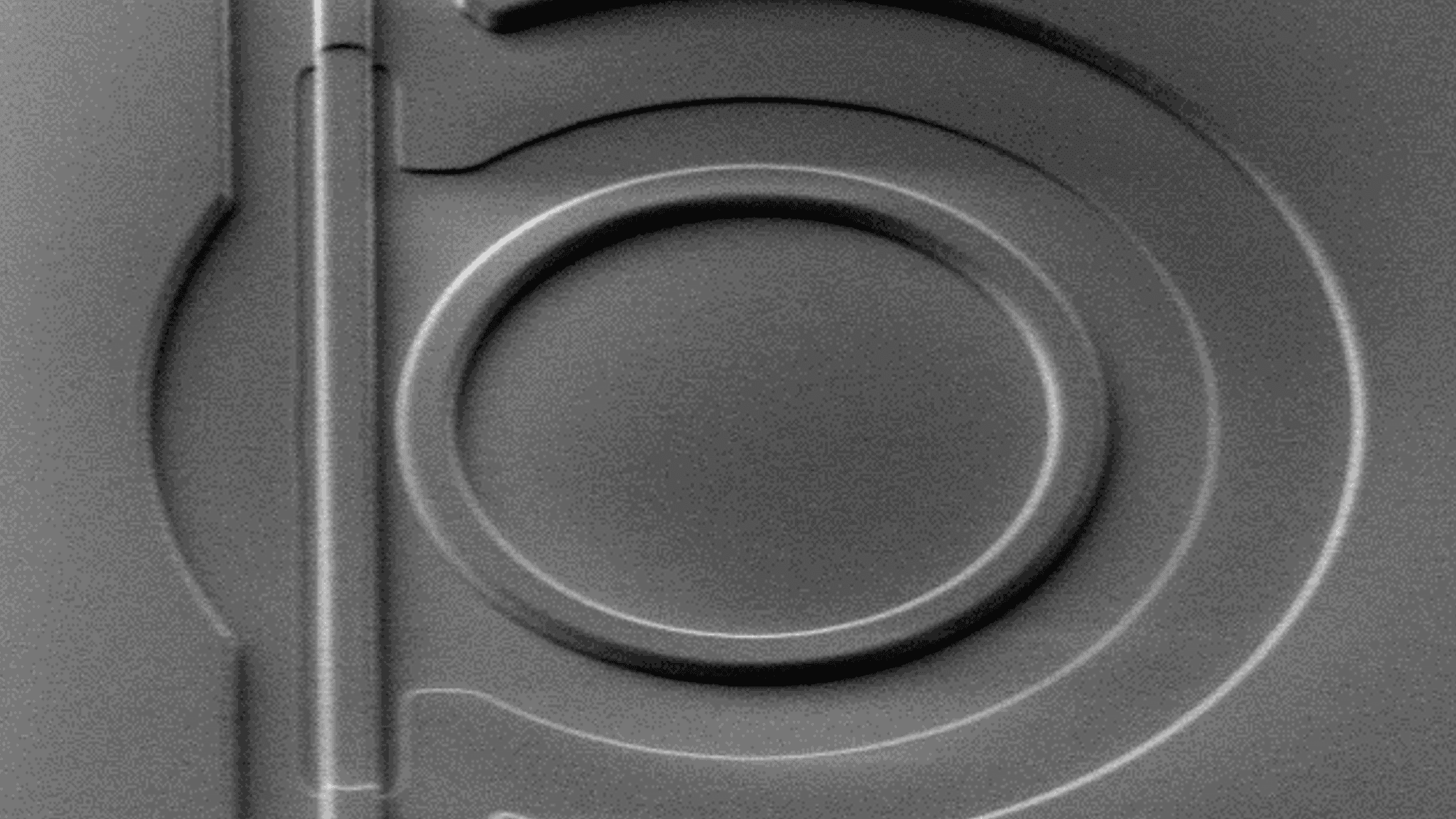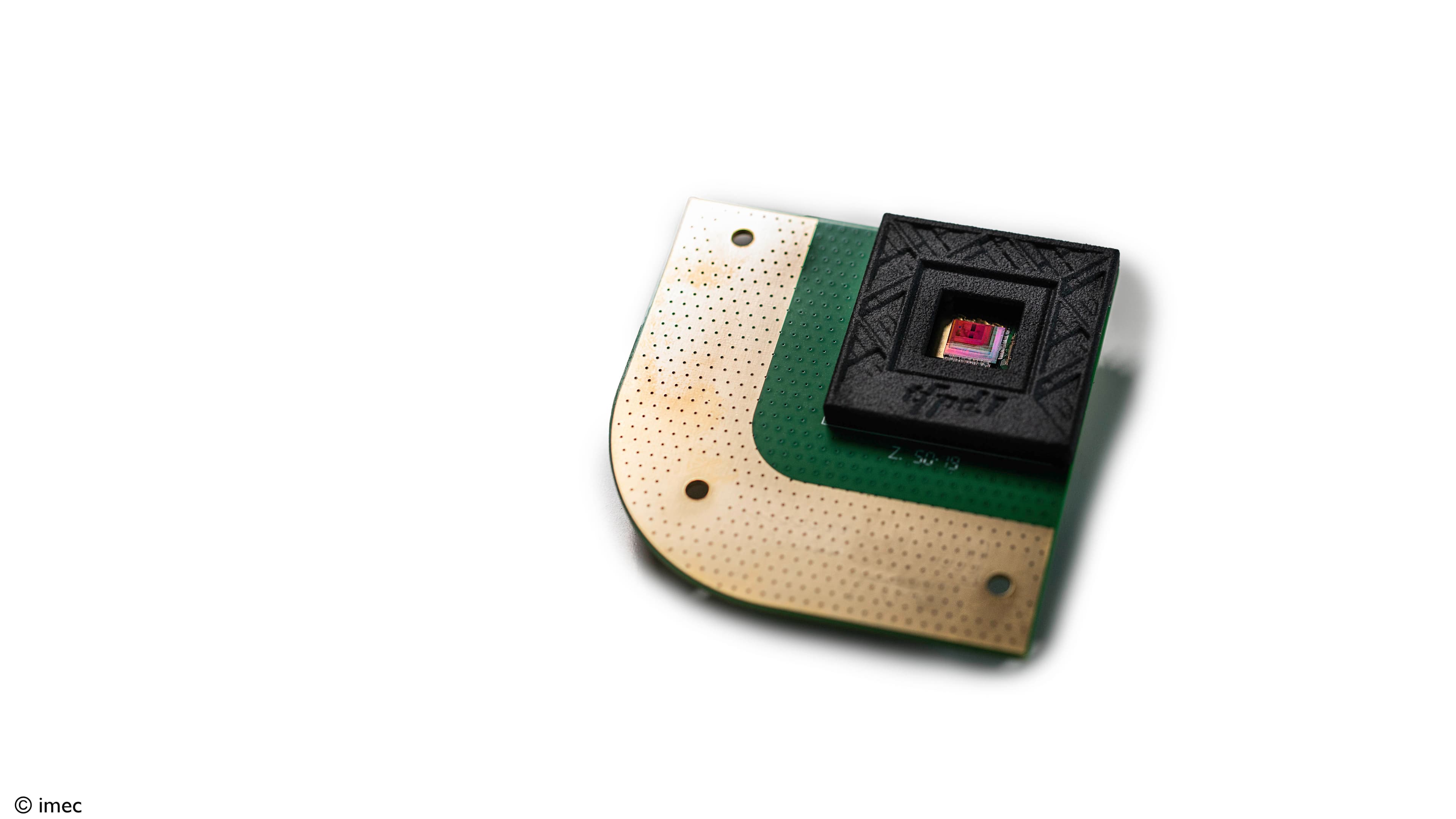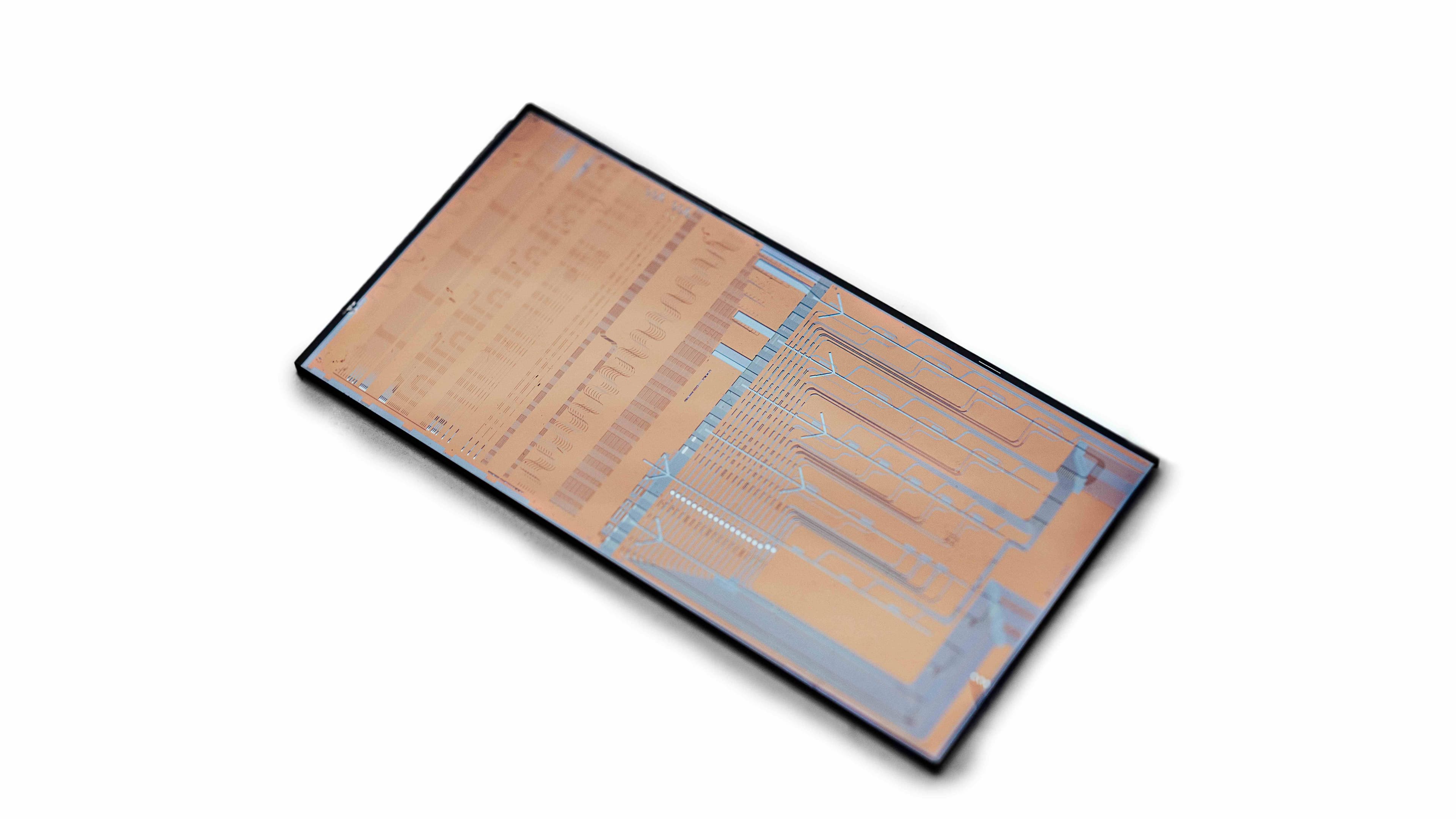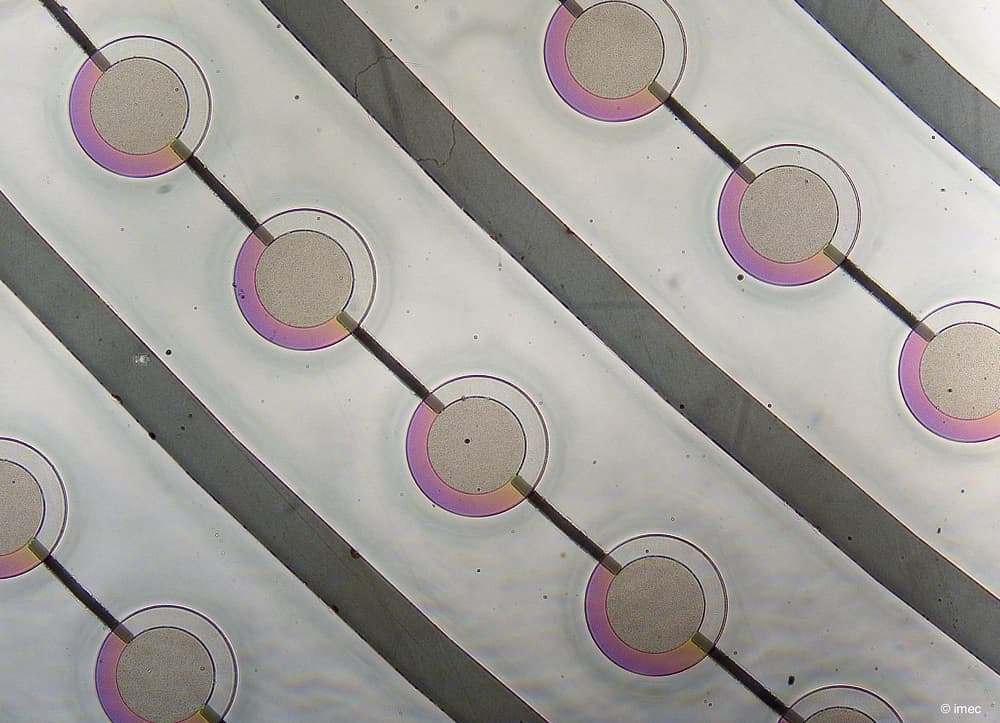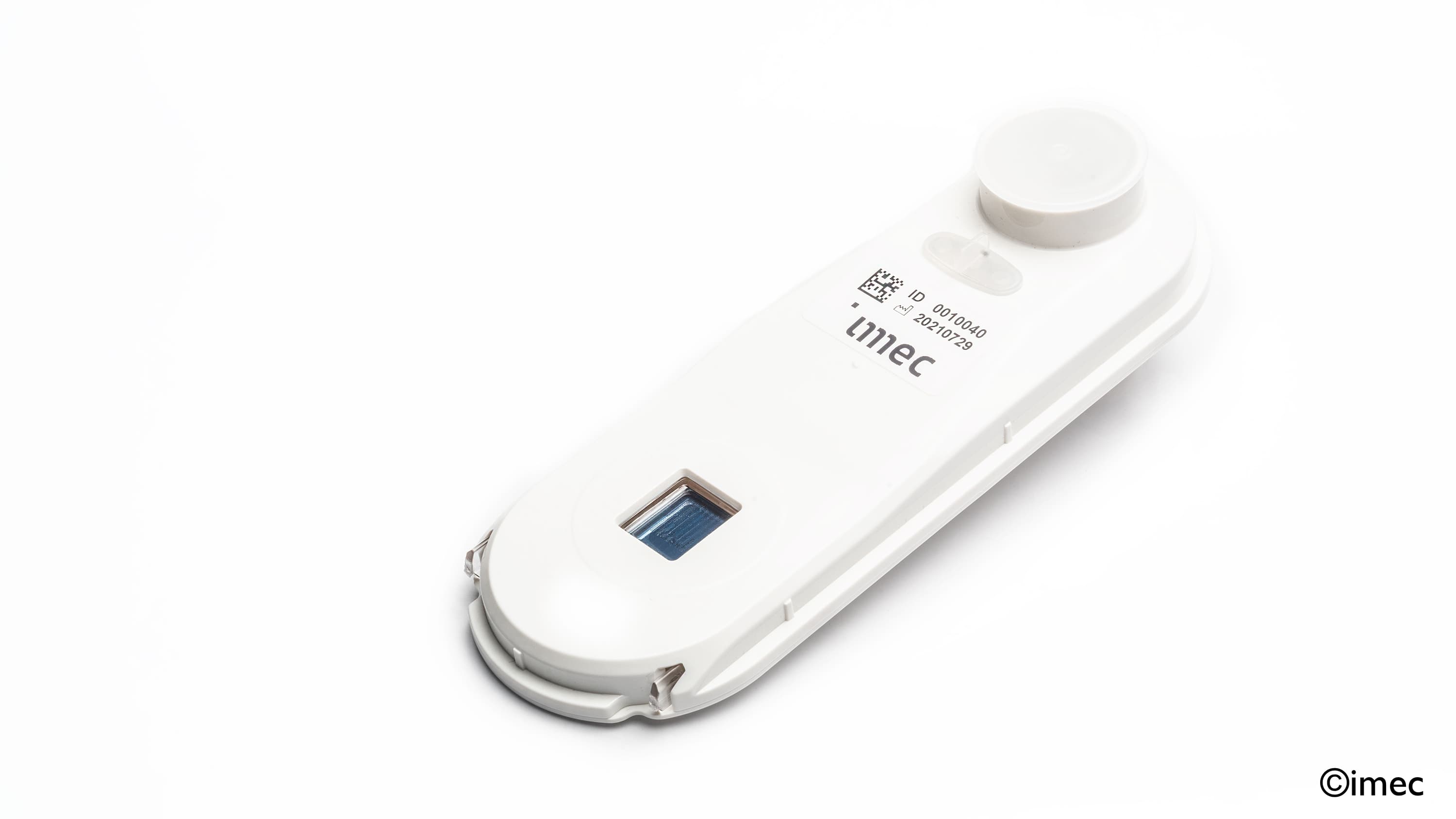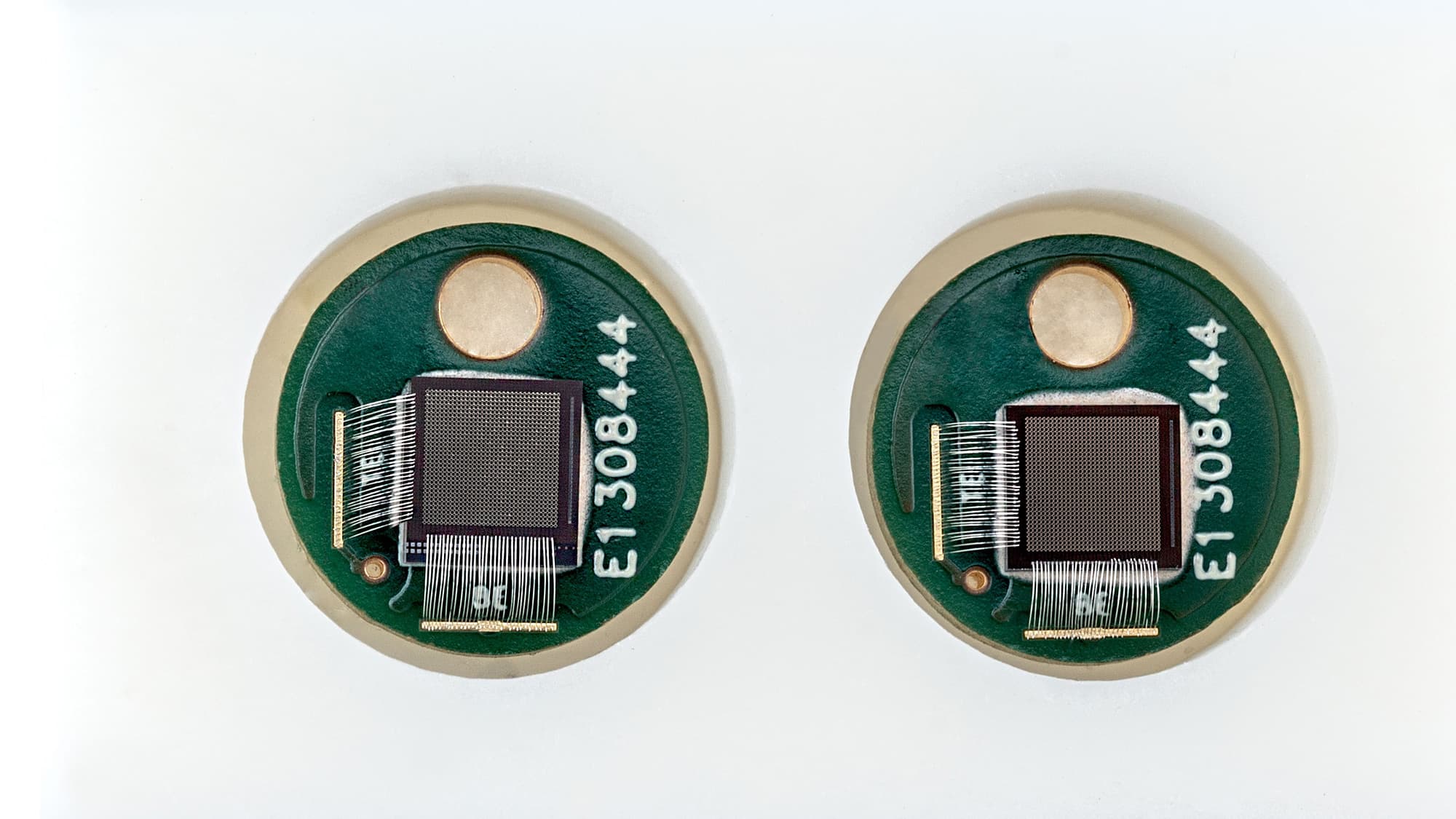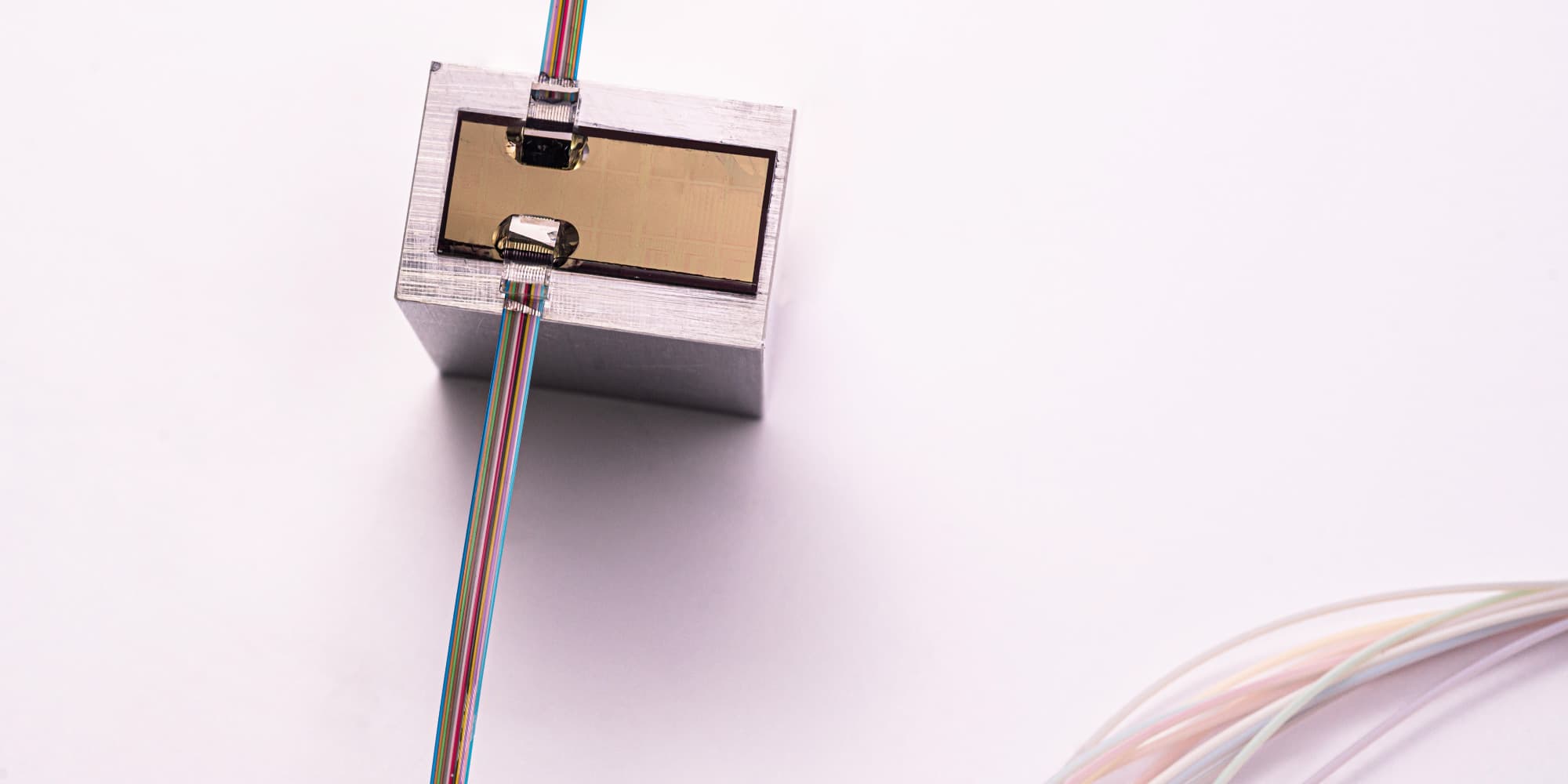Advancements in ultrasound imaging
The use of sound waves for non-invasively visualizing a fetus in the womb, via ultrasound imaging, is widely recognized. By emitting high-frequency sound waves into the body and converting their echo into electrical signals, real-time images can be constructed. Apart from medical imaging, these sound waves find application in biometric identification, gesture recognition (e.g., in automotive and VR applications) and various other fields.
Currently, ultrasound transducers are commonly produced using silicon semiconductor facilities. For high-resolution medical imaging with large-area coverage, large sensors are required, which is challenging for silicon-based sensors because of their high cost per mm2.
PMUT arrays enable large-area imaging
In 2021, imec introduced flat-panel-display (FPD) compatible piezoelectric micromachined ultrasound transducer (PMUT) arrays on glass. As a result of moving from wafer-based to FPD-compatible processes, cost-effective upscaling of ultrasound sensors was made possible. More specifically, due to its compatibility with existing thin-film transistor backplanes and because this transducer technology is not hampered by wafer-size restrictions, large-area processing capabilities with PMUT arrays were made possible. However, the performance of the polymeric piezoelectric material was not yet sufficient for high-quality medical imaging.
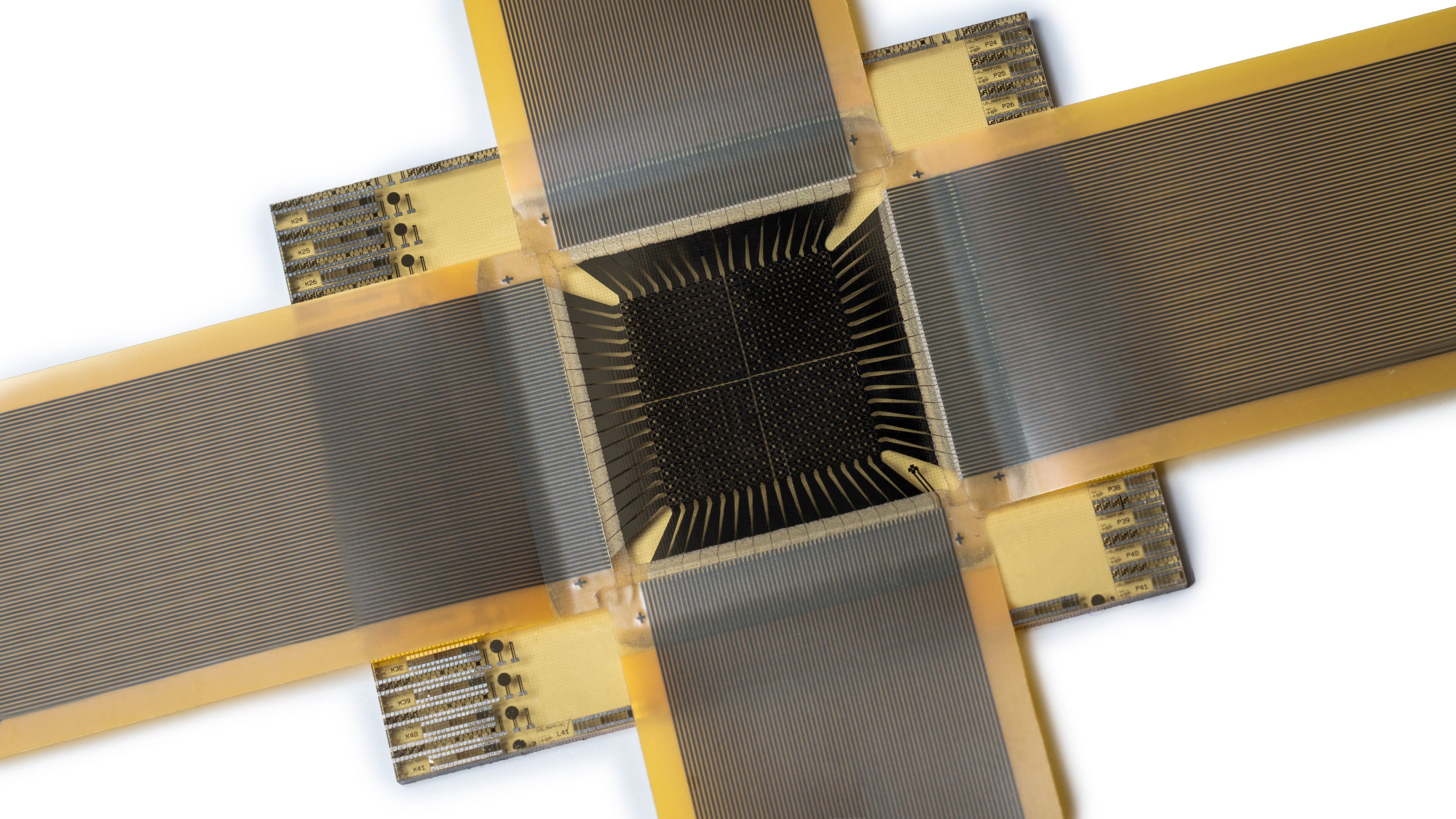
Figure 1 - Close-up of the second generation PMUT array
Now, imec demonstrated a second generation PMUT array with another piezoelectrical material, namely AlScN. “With the earlier implementation of a glass substrate instead of a crystalline silicon one, area restrictions were lifted. This next generation PMUT array additionally exhibited ten times the acoustic pressure compared to the previous generation” explained Epimitheas Georgitzikis, imec R&D project leader of ‘Listen2Future’. Image acquisition up to 10 cm distance was shown, with pressures above 7 kPa in water, making it suitable for high-performing ultrasound imaging.

Figure 2 - Schematic cross-sections of a PMUT process flow. (a) Backplane substrate with optional TFT and/or flexible layer; (b) frontplane substrate with metal-insulator metal stack; (c) bonding of frontplane to backplane and removal of frontplane substrate; (d) metal via interconnect for electrical connection between front- and backplane.
Prospects for flexible ultrasound imaging
“Next steps include maturing the technology and tuning the device to specific frequencies. In doing so, this technology will enable large ultrasound arrays on for instance curved surfaces, such as sensors for the human body or car dashboards, facilitating integration of ultrasound functions on large non-planar surfaces. As a result, exciting opportunities for innovative ultrasound applications will emerge,” says Erwin Hijzen, imec program director MEMS Ultrasound.
In collaboration with Pulsify Medical, imec already created a proof-of-concept rigid medical patch for cardiac monitoring, paving the way for non-invasive and longitudinal monitoring outside hospitals, without the need for a physician. As part of the EU-funded project ‘Listen2Future’, further development of a flexible ultrasound patch is ongoing.

Figure 3 - Characteristics of PMUT elements. The inset shows a microscopy image of the fabricated PMUT and a corresponding cross-section across the cavity.
The findings are described in ‘A flat-panel-display compatible ultrasound platform’, which was presented at The Society for Information Display’s DisplayWeek 2023. Listen2future is an EU-funded project addressing and benchmarking piezoelectric acoustic transducers with 27 partners across seven countries, coordinated by Infineon Technology Austria AG.
This article was published earlier in EDN.

dr. Erwin Hijzen obtained his Ph.D. degree in Applied Physics from Delft University of Technology in 1995. Since then, he has held several positions in R&D and Innovation at both Philips and NXP Semiconductors, working across a variety of fields in semiconductors. In 2022, Erwin joined imec as the Director of the MEMS Ultrasound program.
dr. Epimitheas Georgitzikis received the M.S. degree in electrical and computer engineering, with a focus on electronics and computer engineering, from Aristotle University of Thessaloniki, Greece in 2015 and his Ph.D. degree in electrical engineering from KU Leuven, Belgium, in 2021. He joined imec in 2016 as a researcher working on novel thin-film based image sensor technologies and ultrasound transducers. He is currently imec R&D team leader in the “Mechanical Processing Sense and Accurate Technologies” group, developing large-area ultrasound sensors and actuators and large-area microfluidics.
Published on:
6 December 2023

